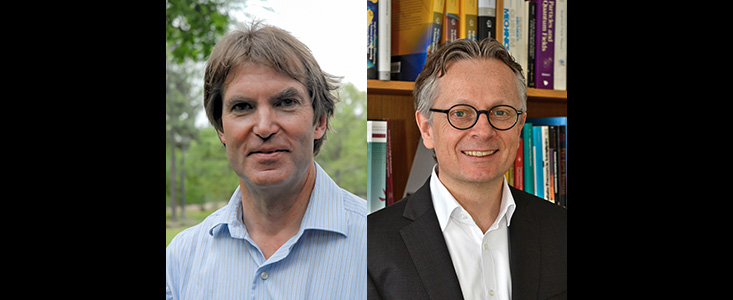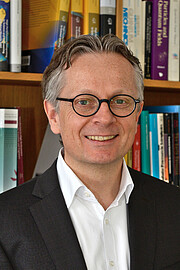- News
- Science
- Scientific Bodies
- Divisions
- Commissions
- Commission A1 Structure
- Commission A2 Structure
- Commission A3 Structure
- Commission A4 Structure
- Commission B1 Structure
- Commission B2 Structure
- Commission B3 Structure
- Commission B4 Structure
- Commission B5 Structure
- Commission B6 Structure
- Commission B7 Structure
- Commission C1 Structure
- Commission C2 Structure
- Commission C3 Structure
- Commission C4 Structure
- Commission D1 Structure
- Commission E1 Structure
- Commission E2 Structure
- Commission E3 Structure
- Commission E4 Structure
- Commission F1 Structure
- Commission F2 Structure
- Commission F3 Structure
- Commission F4 Structure
- Commission G1 Structure
- Commission G2 Structure
- Commission G3 Structure
- Commission G4 Structure
- Commission G5 Structure
- Commission H1 Structure
- Commission H2 Structure
- Commission H3 Structure
- Commission H4 Structure
- Commission J1 Structure
- Commission J2 Structure
- Commission J3 Structure
- Commission X1 Structure
- Commission X2 Structure
- Past Commission Organising Committees
- Working Groups
- Centres
- Scientific Meetings
- Rules & Guidelines
- General Assemblies
- Meeting Proposals
- Future IAU Meetings
- General Assemblies
- EC Meetings
- Officers' Meetings
- Regional Meetings
- Symposia
- Focus Meetings
- Institutional Meetings
- IAU Offices Meetings
- IAU-Sponsored Meetings
- Letters of Intent submitted for 2024
- Letters of Intent submitted for 2023
- Letters of Intent submitted for 2022
- Letters of Intent submitted for 2021
- Letters of Intent submitted for 2020
- Past IAU Meetings
- Templates
- Other Meetings
- Grants & Prizes
- Scientific Bodies
- Publications
- IAU Publications
- IAU Strategic Plan
- Symposia
- WGSBN Bulletins
- Regional Meetings
- Information Bulletins/Catalyst
- E-Newsletters
- Focus Meetings
- Transactions A
- Transactions B
- Related Publications
- GA Newspapers
- CAPjournal
- IAU Books
- Brochures
- IAU Offices
- WG Reports
- Commission Reports
- Division Reports
- Past IAU Publications
- Rules, Guidelines and Instructions for Proceedings
- Publishers
- IAU Publications
- Administration
- About the IAU
- Statutes & Rules
- IAU Policies
- IAU Executive Bodies
- IAU Secretariat
- Resolutions
- Members Administration
- Administrative Dates & Deadlines
- International Organisations Relations
- Donate to the IAU
- Training in Astronomy
- Astronomy for Education
- Astronomy for Development
- Astronomy for the Public
- Office for Astronomy Outreach
- FAQ
- Themes
- Satellite Constellations
- Astronomy in Everyday Life
- How to Report a Discovery
- Careers in Astronomy
- Defining our Place in the Cosmos
- The Constellations
- Light Pollution
- Measuring the Universe
- Near Earth Objects
- How to Participate in Astronomy Research
- Naming of Astronomical Objects
- Naming of Exoplanets
- Buying Star Names
- Naming Stars
- Pluto and the Solar System
- IAU Member Statistics
- Our Moon: the Moon
- Meteors & Meteorites: The IAU Definitions of Meteor Terms
- UNESCO-IAU Portal to the Heritage of Astronomy
- Social Media
- Past Events
- Call for Online Resources
- Astronomy@Home Awards
- Contact
iau2003 — Press Release

6 May 2020
Recipients of 2020 Gruber Cosmology Prize Announced
Lars Hernquist and Volker Springel are honoured for their defining contributions to cosmological simulations
The Gruber Cosmology Prize, which is co-sponsored by the IAU, recognises scientists whose discoveries have driven fundamental advances in our understanding of the Universe. The 2020 prize has been awarded to Lars Hernquist and Volker Springel for their pioneering work on cosmological simulations, which have not only led to their own discoveries, but also become an invaluable resource used widely by other researchers.
The Gruber Foundation today announced the recipients of this year’s Cosmology Prize. The prize is awarded annually to leading scientists and cosmologists who have made groundbreaking discoveries that change or challenge our understanding of the Universe.
This year’s prize goes to Lars Hernquist, Center for Astrophysics | Harvard & Smithsonian, and Volker Springel, Max Planck Institute for Astrophysics, in recognition of their transformative work on cosmological simulations, a method that tests existing theories of, and inspires new investigations into, the formation of structures at every scale from stars to galaxies to the Universe itself. Furthermore, the numerical algorithms and community codes they have developed have been used by many other researchers to significantly advance the field. Hernquist and Springel will share the $500 000 award, and will each receive a gold laureate pin at a ceremony that will take place later this year.
Hernquist was a pioneer in cosmological simulations when he joined the fledgling field in the late 1980s, and since then he has become one of its most influential figures. Springel, who entered the field in 1998 and first partnered with Hernquist in the early 2000s, has written and applied several of the most widely used codes in cosmological research. Together Hernquist and Springel constitute, in the words of one Gruber Prize nominator, “one of the most productive collaborations ever in cosmology.”
Computational simulations in cosmology begin with the traditional source of astronomical data: observations of the Universe. Then, through a combination of theory and known physics that might approximate initial conditions, the simulations recreate the subsequent processes that would have led to the current structure. By comparing the properties of the simulated Universe and galaxies to observations, the validity of the underlying cosmological model can be tested. This tool has allowed Hernquist and Springel, either individually or collaboratively, to show that information from the cosmic microwave background (the relic radiation from the Big Bang) and spectra from quasars are reliable predictors of present-day galactic structures. They have also used computational simulations to test theories relating to cold dark matter (the invisible matter that comprises roughly four-fifths of the Universe’s matter) and dark energy (a mysterious force causing an accelerated late-time expansion of the Universe), and how they, in concert with ordinary baryons, give rise to today’s visible structures.
In addition to their own discoveries, Hernquist and Springel have provided the means for other researchers to transform cosmology. For instance, Hernquist, Springel and their collaborators have emphasised the need for simulations to incorporate feedback — the portion of the outflow of material (such as gas) that feeds back into evolutionary processes. In 2005, working with a collaborator (Tiziana Di Matteo), they demonstrated that black-hole feedback determines the growth relationship between supermassive black holes and their host galaxies.
Thanks to their example, feedback is now a standard component of cosmological simulations at virtually every scale, from stellar evolution, protoplanetary disks, supermassive black holes, gas physics in galaxies and galaxy mergers, to dark matter physics that determines the distribution of superclusters of galaxies into web-like tendrils.
Hernquist and Springel have also written several codes that cosmologists consider indispensable. Hernquist (along with Neal Katz) created TreeSPH, which Hernquist and, subsequently, other researchers used to investigate large-scale structures. Springel wrote two codes that today dominate cosmological research. In 2001 he (with Naoki Yoshida and Simon White) introduced GADGET, which he used in creating the Millennium Simulation, the first dark matter-only simulation to encompass a representative volume of the Universe. The resulting series of images provided a vivid and compelling set of images that helped popularise the idea of a “cosmic web.” Springel also led the creation of AREPO, a moving-mesh simulation code which he and Hernquist (and a team of collaborators) subsequently used in the creation of Illustris, a 2014 simulation of the formation of the galaxy distribution across a broad area of the Universe.
The problems of cosmic structure formation and the formation and evolution of galaxies are extremely complex, so much so that numerical simulations are the only practical way at present to construct a full theoretical model. The remarkable success of contemporary models such as Illustris, which can reproduce properties of the Universe from its largest structures to individual galaxies, over nearly the full history of cosmic time, is the result of a triumphal marriage between state-of-the-art computation and deep astrophysical insights. This year’s Gruber Cosmology Prize recognises the leading role in this breakthrough played by Lars Hernquist and Volker Springel.
In addition to the cash award, each recipient will receive a gold laureate pin and a citation that reads: The Gruber Foundation is pleased to present the 2020 Cosmology Prize to Lars Hernquist and Volker Springel for their transformative work on structure formation in the universe, and development of numerical algorithms and community codes further used by many other researchers to significantly advance the field. The contributions of Hernquist and Springel have led to profound insights spanning billions of years of cosmic evolution, including simulations of the growth of early density fluctuations through to present-day galaxies, the influence of galaxy mergers on star formation, and the close coevolution of supermassive black holes with their host galaxies.
More information
The IAU is the international astronomical organisation that brings together more than 13 500 professional astronomers from more than 100 countries worldwide. Its mission is to promote and safeguard astronomy in all its aspects, including research, communication, education and development, through international cooperation. The IAU also serves as the internationally recognised authority for assigning designations to celestial bodies and the surface features on them. Founded in 1919, the IAU is the world's largest professional body for astronomers.
The Gruber International Prize Program honours individuals in the fields of Cosmology, Genetics and Neuroscience, whose groundbreaking work provides new models that inspire and enable fundamental shifts in knowledge and culture. The Selection Advisory Boards choose individuals whose contributions in their respective fields advance our knowledge and potentially have a profound impact on our lives.
Contacts
A. Sarah Hreha
Executive Director, The Gruber Foundation, Yale University
New Haven, USA
Tel: +1 203-432-6231
Email: sarah.hreha@gruber.yale.edu
Lars Lindberg Christensen
IAU Press Officer
Garching bei München, Germany
Tel: +49 89 320 06 761
Cell: +49 173 38 72 621
Email: lars@eso.org

